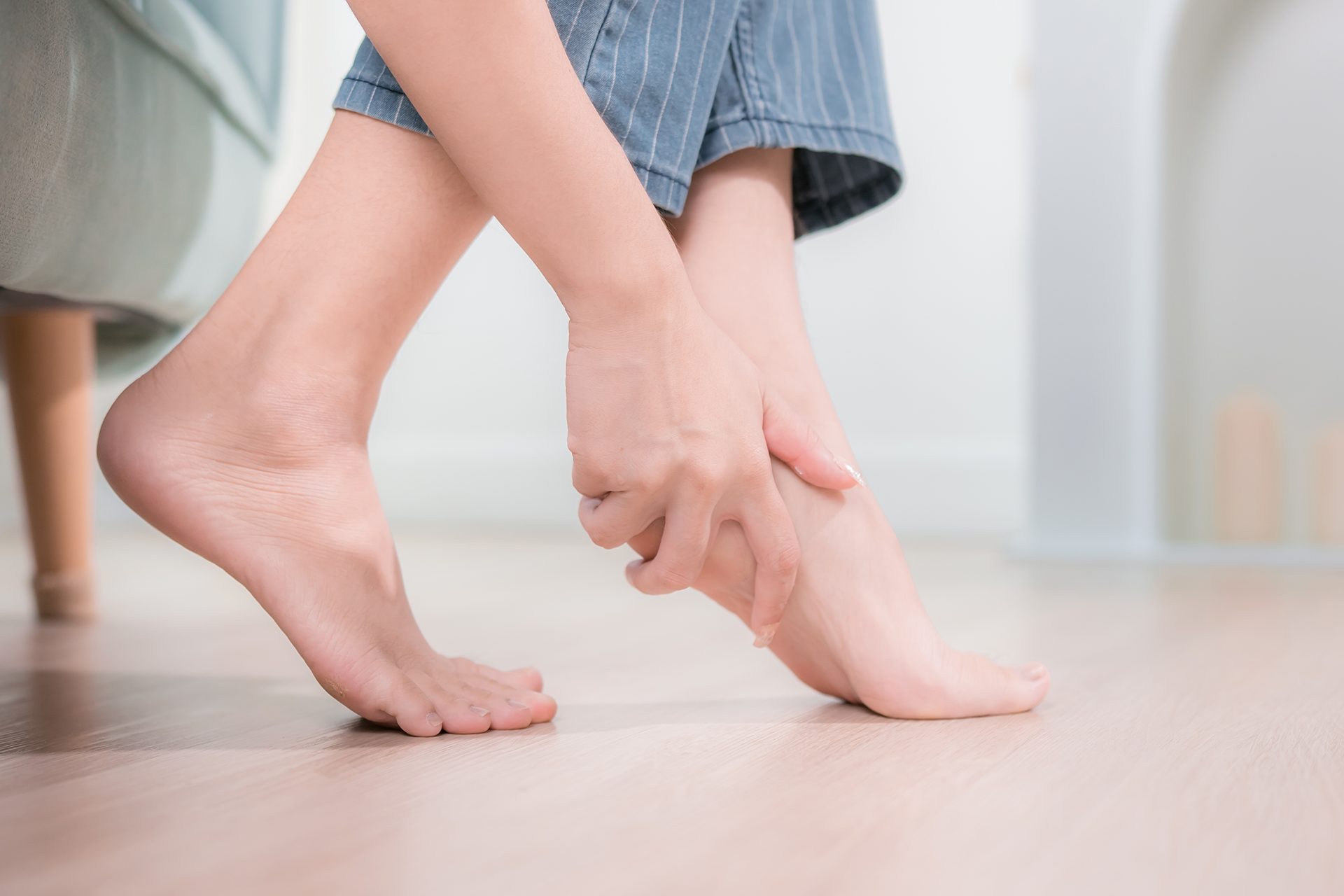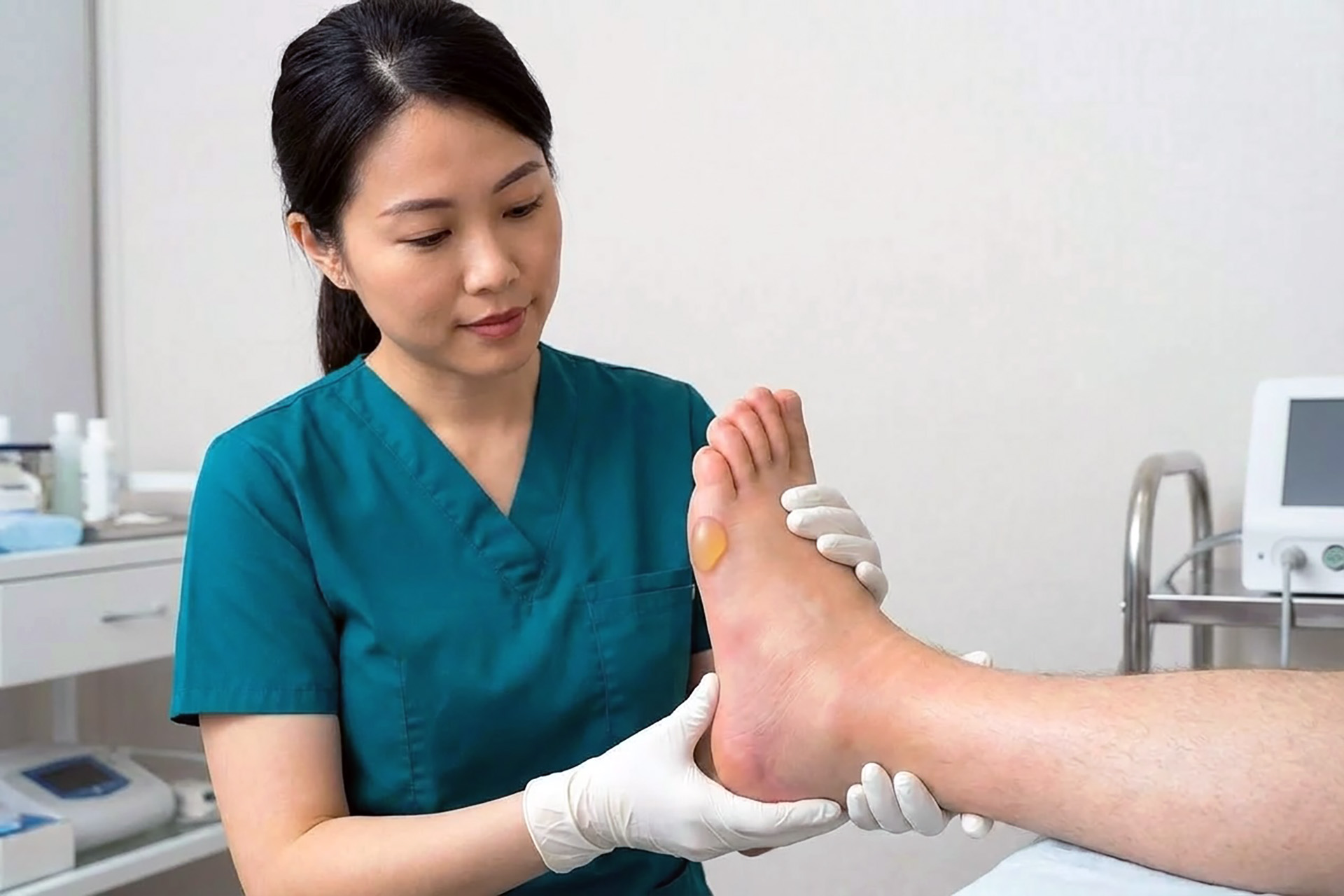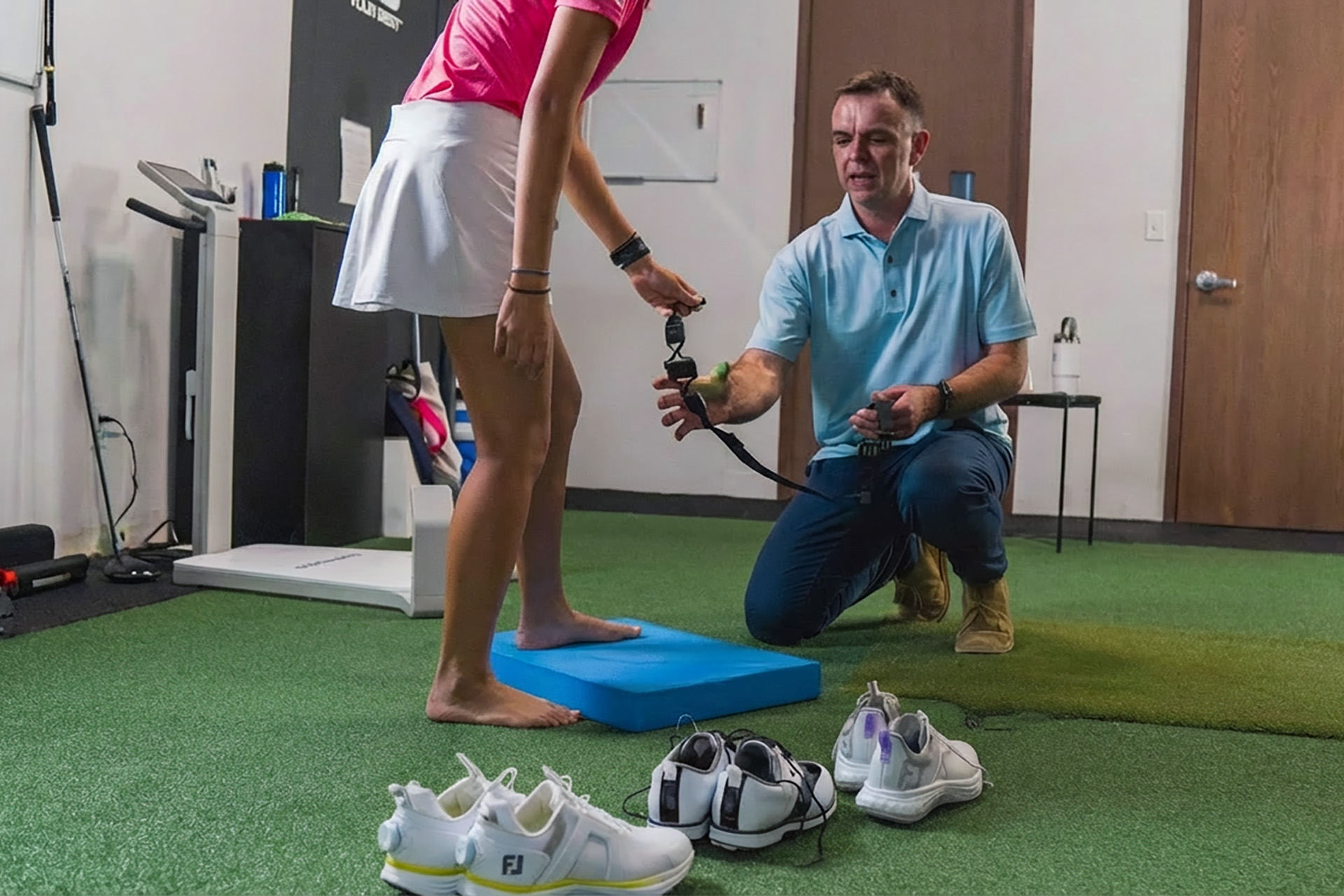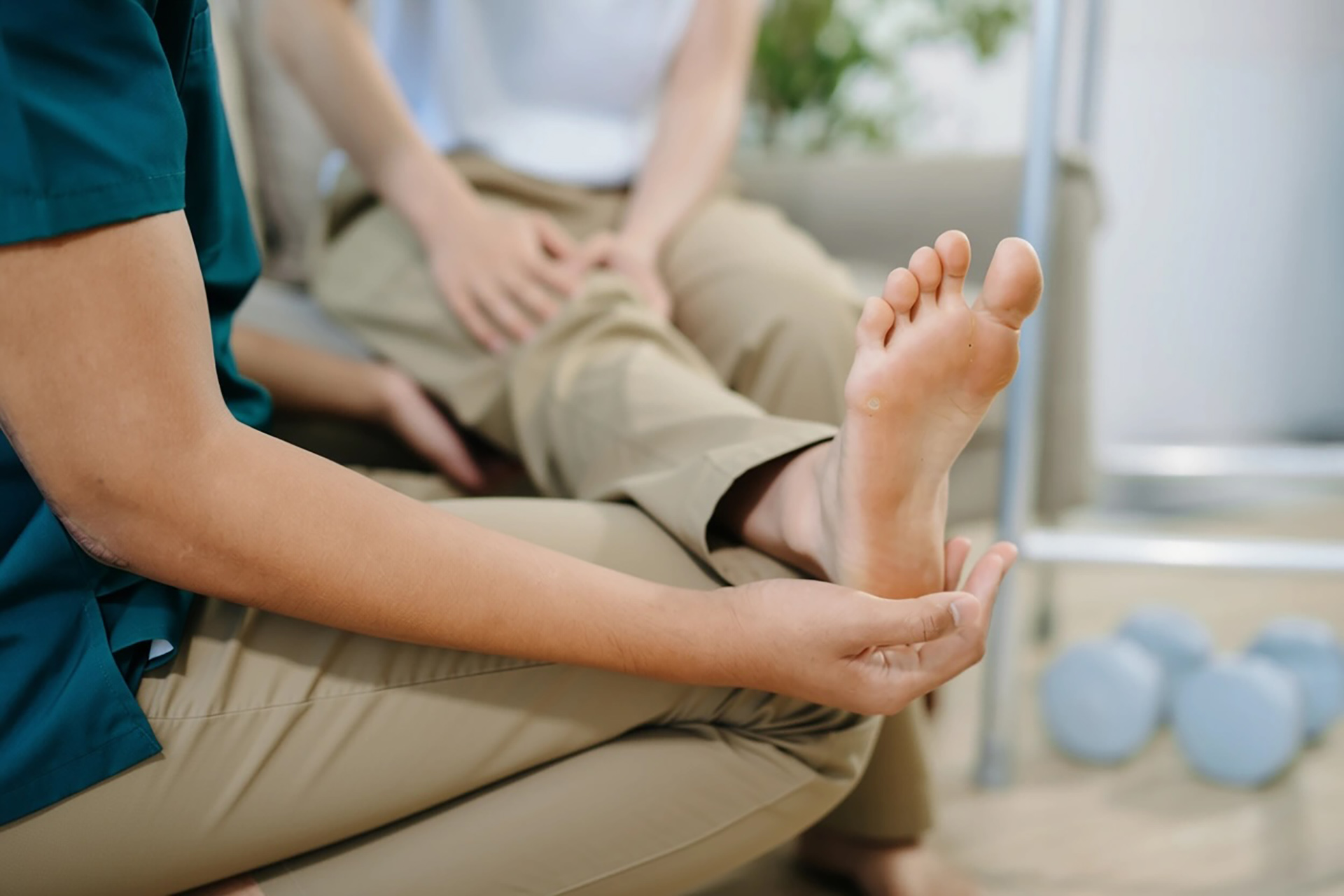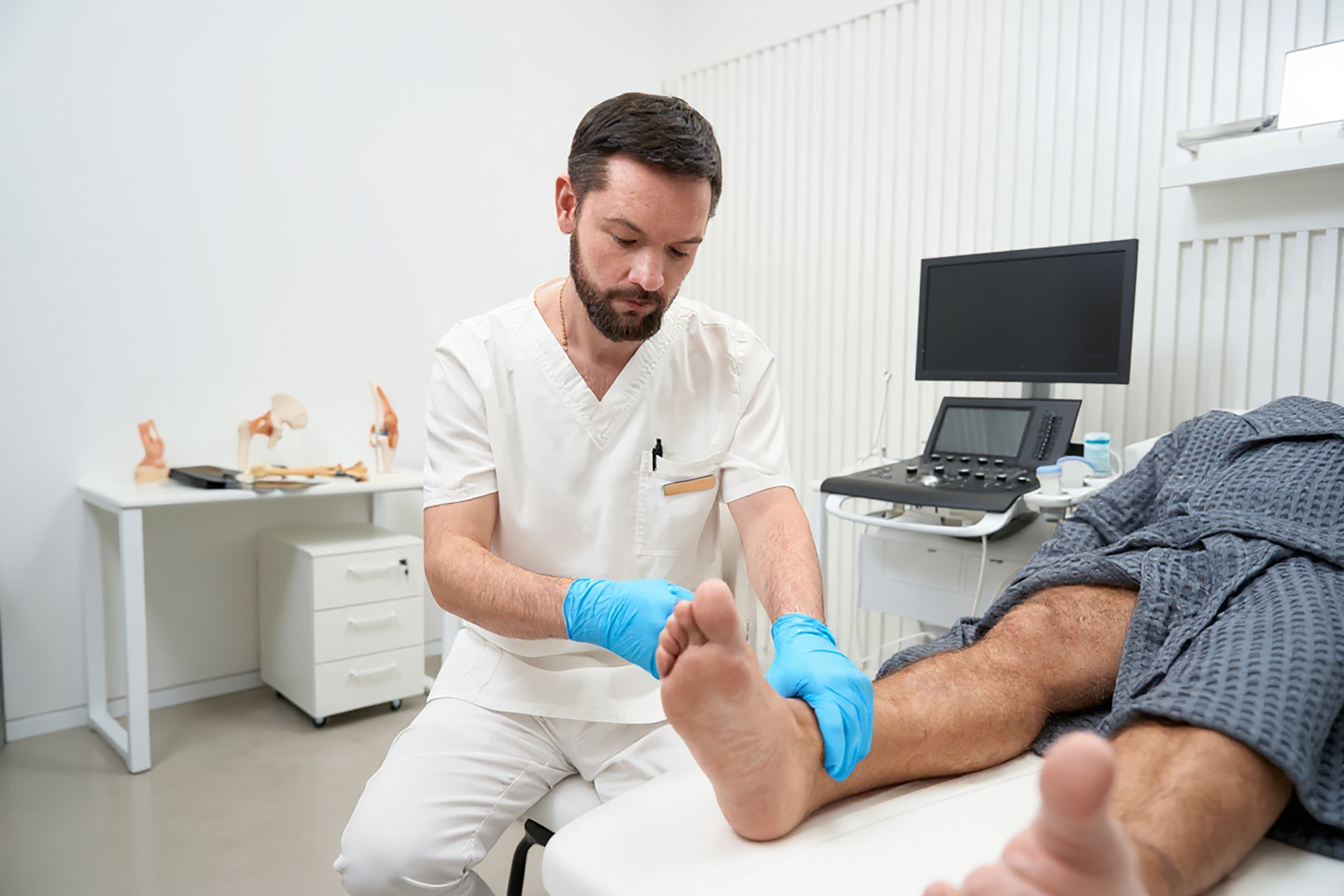People with heel pain often do not experience plantar fascia pain directly related to the heel spur; rather, the pain results from other inflammatory and degenerative conditions, such as plantar fasciitis, Achilles tendonitis, and osteoarthritis. Chronic inflammatory or degenerative nerve conditions like Tarsal Tunnel Syndrome and diabetic neuropathy can also cause the painful condition.
In the vast majority of cases, heel pain can be treated effectively with conservative, noninvasive podiatry heel spur treatments.
How To Identify If You Have a Heel Spur
Heel spur symptoms include hook-like calcifications between the base and the foot arch, often without pain. What causes heel spurs is the repetitive stress on the foot’s muscles, tissues, and ligaments. The condition can vary in length, from very small to more than 1 cm, and grows along the tendon’s pull from the heel.
Heel spurs are often found at the base of the foot due to plantar fasciitis or at the back of the heel attributed to Achilles tendonitis. Pain intensity ranges from a negligible dull ache to a constant sharp throb for those experiencing discomfort from heel spurs.
Although anyone can get heel spurs, athletes, women, and the elderly are at greater risk of getting them:
- Athletes can develop heel spurs when repeated stress on the feet strains the tissues of the heel.
- Women are more likely to get heel spurs from wearing high-heeled, tight, or narrow shoes. Restrictive shoewear can often shorten the Achilles tendon and put pressure on the foot.
- Senior citizens sometimes have a reduced fat pad that cushions the impact of the heel on the ground, known as fat pad syndrome. As a result, repeated tension at the heel over time can increase the chance of heel spurs.
Genetic factors can sometimes cause heel spurs, but more often form from stress on the tissues and tendons at the heel. Heel spur pain symptoms include intense, sharp pain that feels like a knife sticking into the heel. You can also experience discomfort at the bottom of the heel when you wake in the morning or during rest, but not during exercise.
People with musculoskeletal issues often have difficulty standing, walking, running, and remaining upright for long periods. However, getting the best treatment for heel spurs starts with the proper diagnosis.
Common Misdiagnosis of Heel Spurs
What are the signs and symptoms of heel spurs? Only 5 percent of people with heel spurs will report discomfort in the heel area. Pain in the heel area is often an indication of another musculoskeletal dysfunction. Heel pain can result from:
- Overuse injury
- Anatomical structure of the feet (e.g. flat feet or high arches)
- Muscle tightness in the calves and feet
- Weight shifts, such as through rapid excess weight gain in pregnancy
- An increase in the level of exercise
- Spending too much time on your feet
- Repeated impact of your heel against hard surfaces
- Bone bruises from the impact of your feet against hard surfaces
- Small stress fractures at the heel or foot
- Abnormal gait, whether overpronation (turning too much inwards) or oversupination (the turning outwards) of your feet
Heel pain can also be caused by certain illnesses such as diabetes, inflammatory arthritic conditions, or Sever’s disease in children.
More often than not, heel pain is due to plantar fasciosis and Achilles tendinopathy. Plantar fasciitis is an inflammation of the tissue band (plantar fascia) that connects the heel to the toes through its arch. It is a common foot ailment often associated with heel spurs, as many people with plantar fasciitis also have them. However, plantar fasciitis is not caused by heel spurs, which can lead to its misdiagnosis as the cause of discomfort.
Achilles tendonitis is an overuse injury of the tendon connecting the back of the leg to the heel, which commonly occurs in athletes and in those with increased activity that places strain on the foot.
If you believe you have heel spurs, a consultation with one of our podiatrists can help quickly assess whether the foot pain is caused by a heel spur or by another musculoskeletal injury or disease.
Musculoskeletal Dysfunctions Related to Heel Spurs
We see patients at The Foot Practice podiatry clinic daily with heel pain. A Google search may indicate that the condition is a heel spur. However, the subtle differences that cause heel pain are best evaluated by a podiatrist or foot and ankle doctor.
Taking the necessary precautions to prevent heel spurs from forming in the first place is essential. These measures can include wearing supportive shoes, stretching leg muscles before movement and exercise, and using insoles to support overpronation and oversupination.
How to treat heel spurs starts with a proper diagnosis to develop the right treatment plan for your condition, especially if the condition is caused by another dysfunction, such as:
- Achilles tendonitis is an acute inflammatory condition often associated with the repetitive overuse of the largest tendon in the body that connects the calf muscles to the heel bone.
- Plantar fasciosis can occur with or without inflammation, where the ligament at the bottom of the foot attaches to the heel bone, tightens and stretches, and causes pain due to repetitive strain.
- Tarsal Tunnel Syndrome can lead to permanent, irreversible nerve damage when the posterior tibial nerve is compressed at the tarsal tunnel, resulting in heel pain, numbness, and tingling.
- Diabetic neuropathy requires a multidisciplinary management approach as the chronic dysfunction causes slow and progressive nerve damage with unrelenting shooting, burning, numbness, and other associated pain.
These are only a few conditions that exhibit heel pain and can be mistaken for heel spurs.
Working with an experienced podiatrist in Singapore can make the difference between effectively managing your foot and ankle condition.
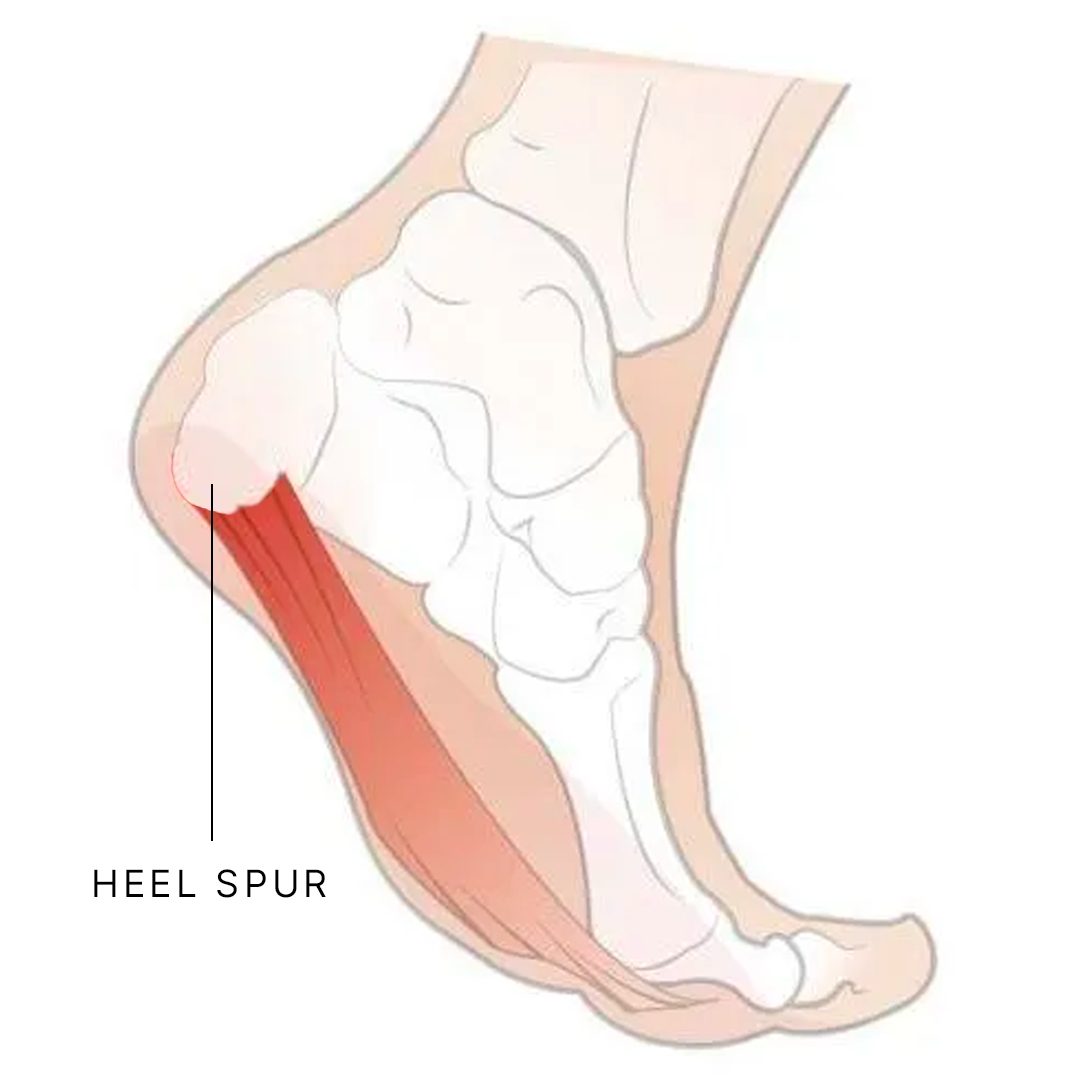
Diagnosis, Treatment, Management and Prevention
Constant overuse strains the foot muscles, tendons, and ligaments. This is especially true for athletes who jump a lot or run on hard surfaces. In the vast majority of cases, conservative treatment for heel spurs is effective in alleviating symptoms.
During your visit, our podiatrist will examine your lower limbs to assess for limited ankle flexibility, areas of tenderness, flat or high-arched feet, and other ailments, inflammation, or repetitive overuse from daily activities or acute trauma. You can have multiple concurrent conditions with a heel spur, including plantar fasciitis or Achilles bursitis.
If you experience heel pain, it is essential to assess your symptoms as they can worsen over time, even leading to a debilitating disability. Our podiatrist will develop a plan to ensure proper diagnosis and management of your heel spur condition, restoring optimal foot function.
How to Relieve Heel Spurs with Conservative Treatments
The vast majority of heel pain can be treated with noninvasive, conservative therapies and rehabilitative exercises focused on the affected tendon.
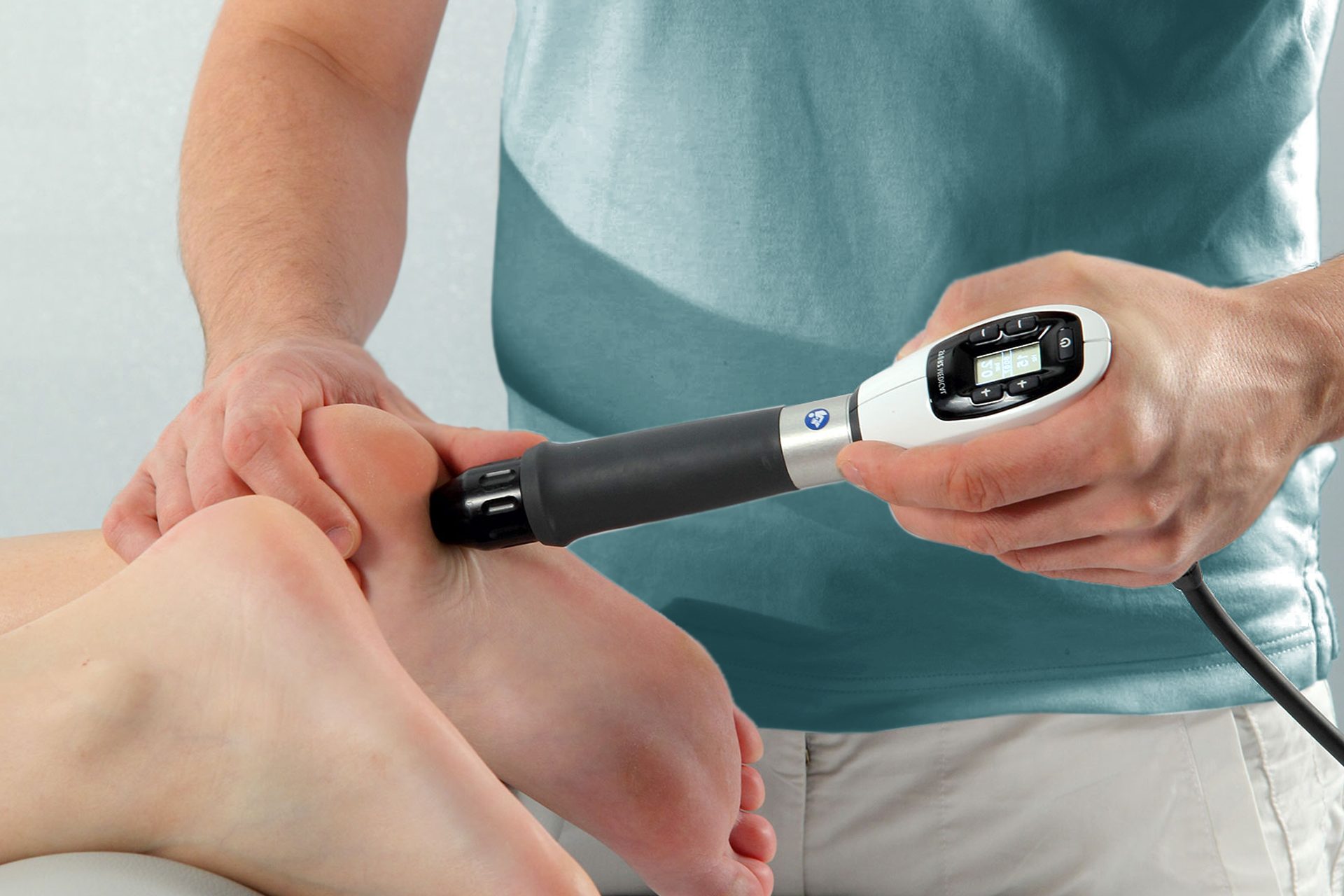
Natural treatments for heel spur management to improve mobility and quality of life include:
- Foot Mobilisation Therapy to strengthen and stretch the plantar fascia to ease the tension in the tissues.
- Footwear Assessment guides proper fitting shoes with adequate support, reducing pressure on inflamed areas and protecting the heel.
- Shockwave Therapy uses acoustic soundwaves to noninvasively activate the body’s natural processes for tissue repair, helping initiate the healing of heel spurs and related inflammation and thereby reducing the pain you feel.
- Dry Needling treats the symptoms of heel spurs and tendon inflammation by releasing myofascial trigger points to relieve pain.
- Orthotic Therapy may be prescribed to support the foot arch, redistribute pressure across the feet more evenly, and activate proper foot muscles to alleviate biomechanical imbalances contributing to heel spur pain. In addition, obtaining an accurate 3D Gait Analysis is critical to achieving the best results with custom-made insoles.
Other conservative protocols may include anti-inflammatory medications, ice packs, stretching exercises for the calf or to roll out the plantar fascia, night splints, heel spur taping to alleviate tension, and physical therapy can also aid in relieving pain from heel spurs.
When to Know When Surgery Is Necessary
Surgery may be required on rare occasions to treat heel spurs. If we believe it is necessary, our podiatrists will refer you to a surgeon for needle aspiration of the calcific deposits or to an orthopaedic surgeon for a consultation regarding surgical excision of a heel bone spur.
Using modern techniques, recovery from heel spur removal is relatively quick, and a podiatric aftercare rehabilitation plan effectively supports the results.
Heel Spur Management in Singapore
The Foot Practice Podiatry Clinic is at the forefront of innovation in the management of foot and ankle musculoskeletal conditions in Singapore. With our pioneering technologies, including 3D infrared biomechanical gait analysis and shockwave therapies for the lower limbs, our highly specialised approach to managing heel spurs focuses on the least invasive treatments to restore optimal mobility and eliminate pain.
If you believe you have heel spur symptoms, consulting one of our podiatrists can help assess your condition and provide the right plan for recovery for heel spurs or related dysfunction. As with other ailments, early diagnosis often leads to greater recovery and aftercare.

